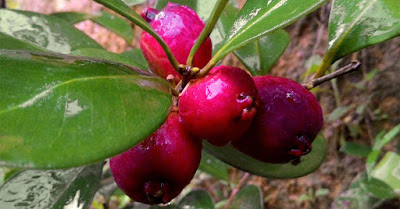In a truck, brought they him,
Along with his brothers,
A hole was dug deep,
And in he went for keeps!
The lineman did climb up,
Hooked him up with wires,
Jumped back in the truck,
And off went home to sleep!
Alone and upright,
He watched the traffic flow,
Passed people, cattle, dogs,
He proudly viewed them all!
Seasons came and went,
The post had not a friend,
At times, a bird perched,
Or the tomcat left his scent!
Lonely and alone he bore,
Living monotony’s affront!
A day in the hot sun,
A grain of sand, loosened, fell,
Leaving a tiny hole,
Which wind did cover with dust!
The hot summer breeze,
Blew in seeds of moss,
Dark clouds, thunder and lightning,
Prelude to monsoon rain!
The funaria seeds did sprout,
The post had a spot of green,
And as the moss plant grew,
Emerged love in the heart of stone!
Clinging to him for support,
She thrived in the rain and shine,
Her glee erupted in capsules,
Full of spores of mirth!
The infectious joy of the moss,
Brought thrills of cheer in him,
But alas! The rains came to an end,
Stern, dry winter set in!
The moss tried to carry on,
From the mist who nightly kissed,
Yet the hot day drained her blood,
And they knew her time had come!
In a silent tremble, asked he,
“What now?”, Calmly the moss replied,
“Here dear, all things must end.
Grieve thou not for me!
Thou hast protected me well with love,
Seeking naught in return,
I am so loath to leave thee,
Helpless, calmly I accept my fate!
Know that we never truly die,
For my life, I have kept in my spores,
Soon as the rains are back,
My kids will sprout evermore!
Through them, I will hug thee tight,
Every monsoon, with thou, I’ll be,
Our love doth bind us together,
I’ll never leave thee, my own!
As I free, do I see,
Thy father, eternal spirit,
My mother, scintillating nature,
Dancing together for joy!”


















































